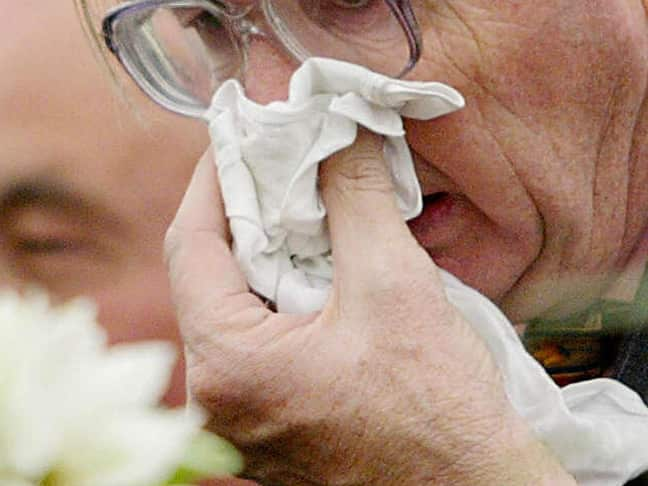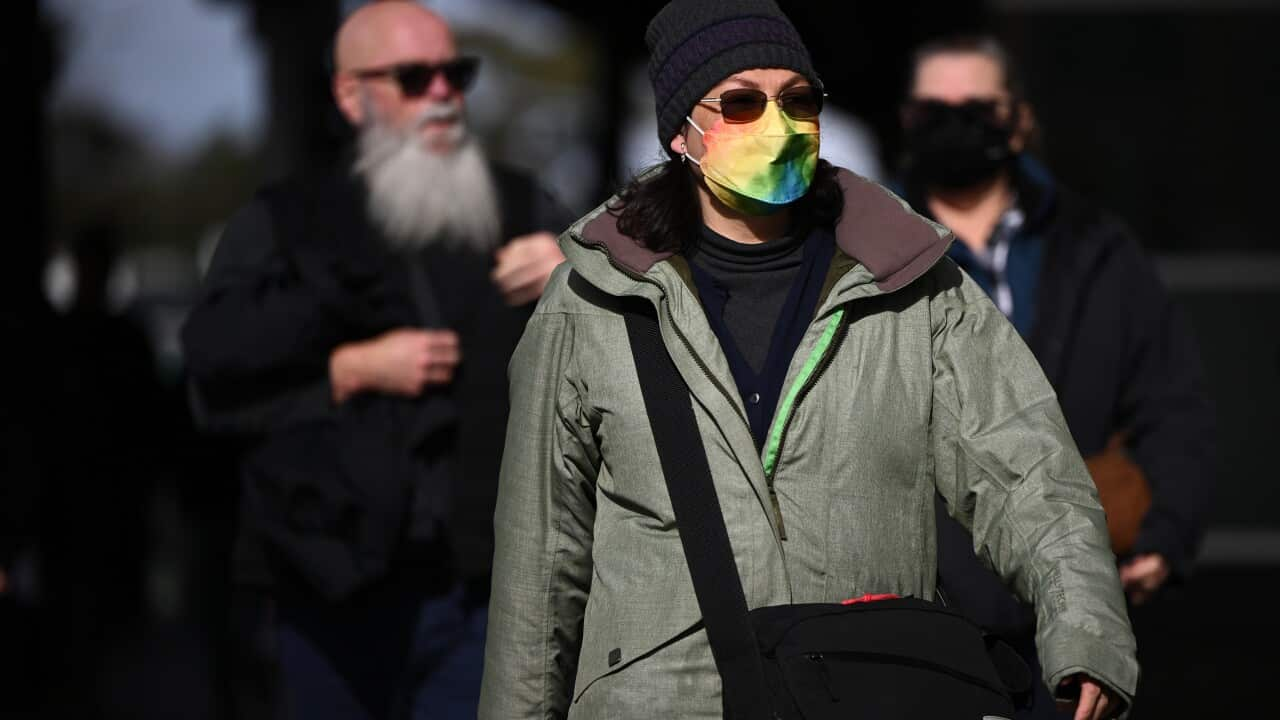Key Points
- Australia could be moving beyond the peak of its current COVID-19 wave as the number of new infections plateau.
- An uptick in booster vaccinations and more mask-wearing are believed to have helped new infections stabilise.
There are signs that Australia could be moving beyond the peak of its current COVID-19 wave as the number of new infections plateau across the country.
Victoria's Chief Health Officer Professor Sutton said the state was "in our plateau phase now", suggesting the worst of the 2022 winter wave may be nearing an end.
"We may well have peaked in terms of case numbers, or we're just about to peak. Hospitalisations will follow," he said.
Victoria reported 8,937 new cases on Saturday, representing a steady decline since a monthly peak of 14,274 cases on 20 July.
In NSW, cases have declined for the third consecutive day with 13,414 new infections reported on Saturday.
Queensland reported 18,678 new cases but authorities said the high increase was due to a backlog of results being loaded into the system.
"These range from 10 June - 23 July 2022. Without the backlog, today's PCR and RAT total is 4713," the Queensland Government said.
Hospitalisations in the state also dropped for the fifth day, but Acting Chief Health Officer Dr Peter Aitken said it was unclear whether the peak had been reached.
He said it's too early to say for sure but he added he's 'cautiously optimistic' at the moment.
"We've had a couple of days in a row where we've had numbers drop and, hopefully, that means people are doing all those things we've talked about."
Deakin University epidemiologist Catherine Bennett said an average decline in case numbers and hospitalisations across most states and territories was "good news".
"It looks like we are seeing a consistent story, so that's encouraging. It tells us that we might not see the case numbers come down for a little while, but at least we've come off that steep growth," she said.
Professor Bennett said Australia's COVID-19 statistics were consistent with other countries, including South Africa and the United Kingdom, which have now passed the peak of their latest Omicron waves.

Omicron was first identified in late November, 2021, in South Africa. Source: AAP / Denis Farrell/AP
Authorities have attributed the high death rate to the spread of the BA.4.5 and BA.5 Omicron sub-variants, which have taken hold across much of the country.
"We've seen about a two-week lag between hospitalisations and deaths. So, hopefully, we're not far off the peak in terms of those deaths being reported as well."
Professor Bennett said there was a "combination of factors" that may have attributed to the stabilisation of new infections, including a recent uptick in booster vaccinations and increased mask-wearing in the community.
Prof Bennett said it is "really encouraging" to see a fall in the effective reproduction number in a number of Australia's jurisdictions throughout the month of July, according to government data released weekly.

Flu cases have declined after they reached an earlier than usual peak in June. Source: Getty / Getty Images
For the week ending 26 July, the effective reproductive number declined compared to the previous week in the ACT, Tasmania and Western Australia.
"We have seen that collision of flu and Omicron. We look like we're through flu now that it has peaked earlier than it often does [in previous years]. So the fact that flu has turned around is probably benefiting from these other precautions that we're putting in place at the individual level, as well looking after aged care, health care, public transport and those high-risk settings," she said.
However, she warned vulnerable groups still remain at greater risk - and the situation could change or cycle again throughout August.
But Prof Bennett said she expected pressure on hospitals to ease as both the flu and COVID-19 infections continued to wane over the coming weeks.
"If we don't have another variant hot on our tails, we should see these numbers come down to a level we haven't seen since probably before Christmas," she said.
"If that coincides with our spring and the possibility of next-generation vaccines and all the other things they're looking at, then we could have a very different summer this year."











